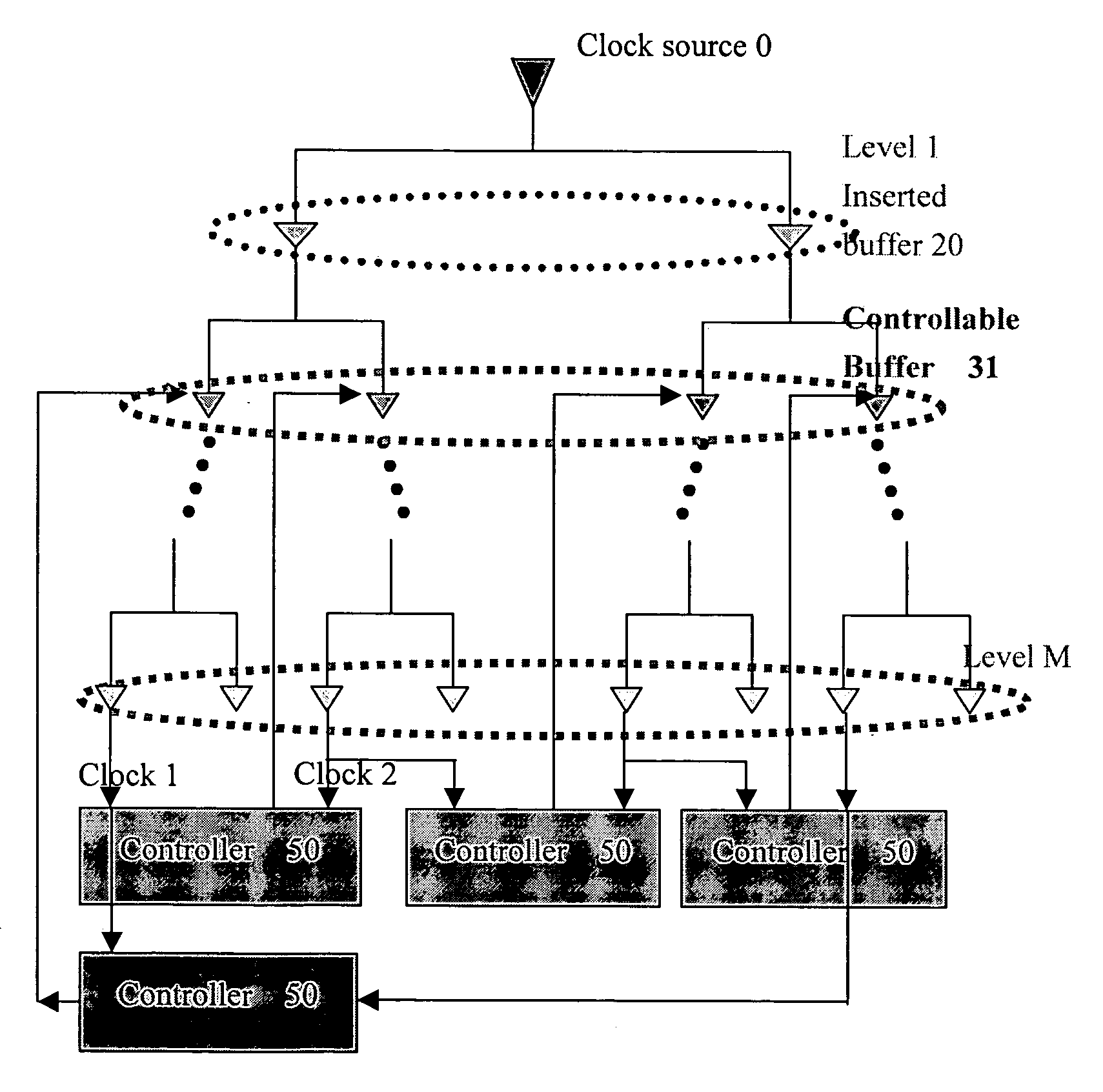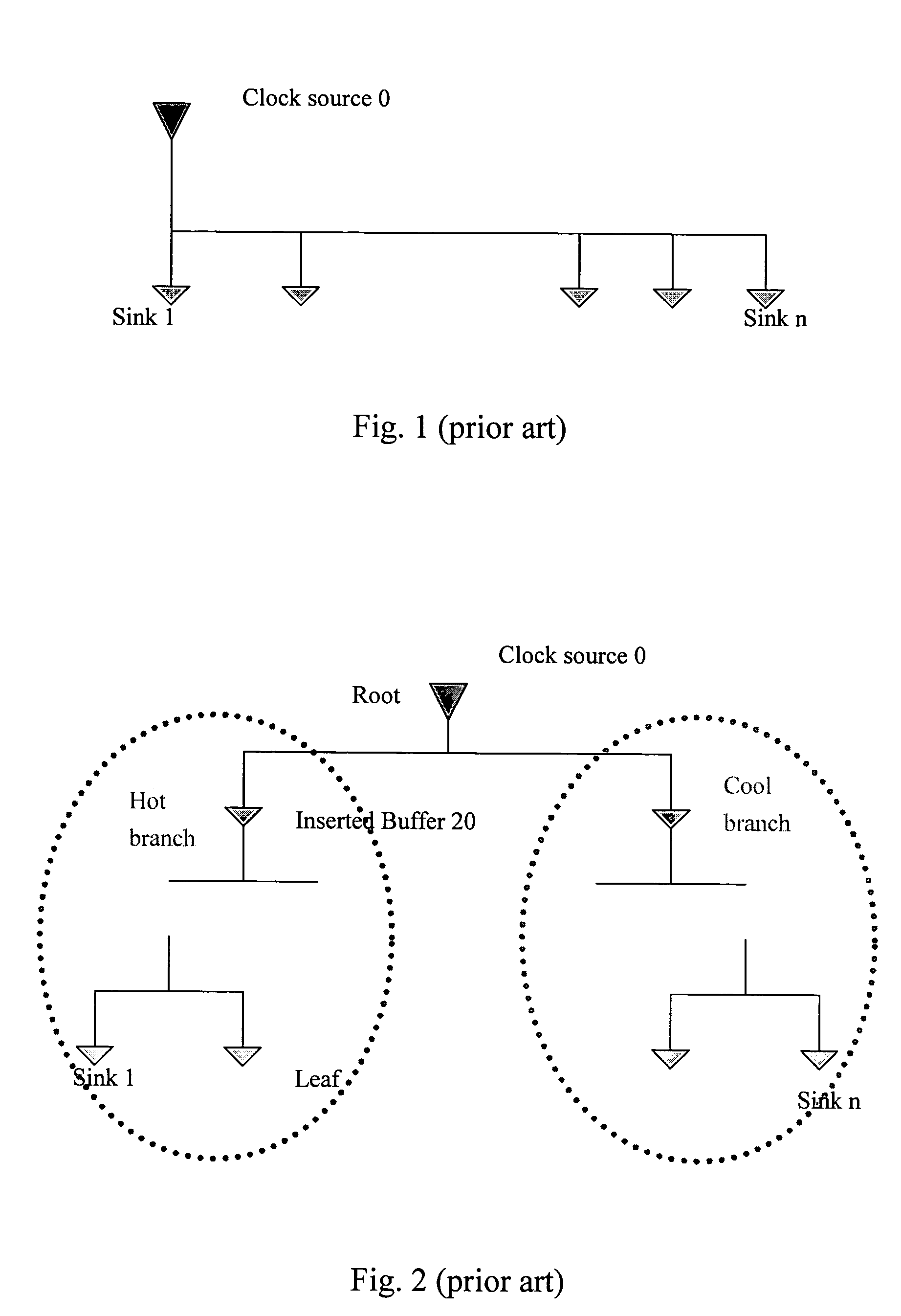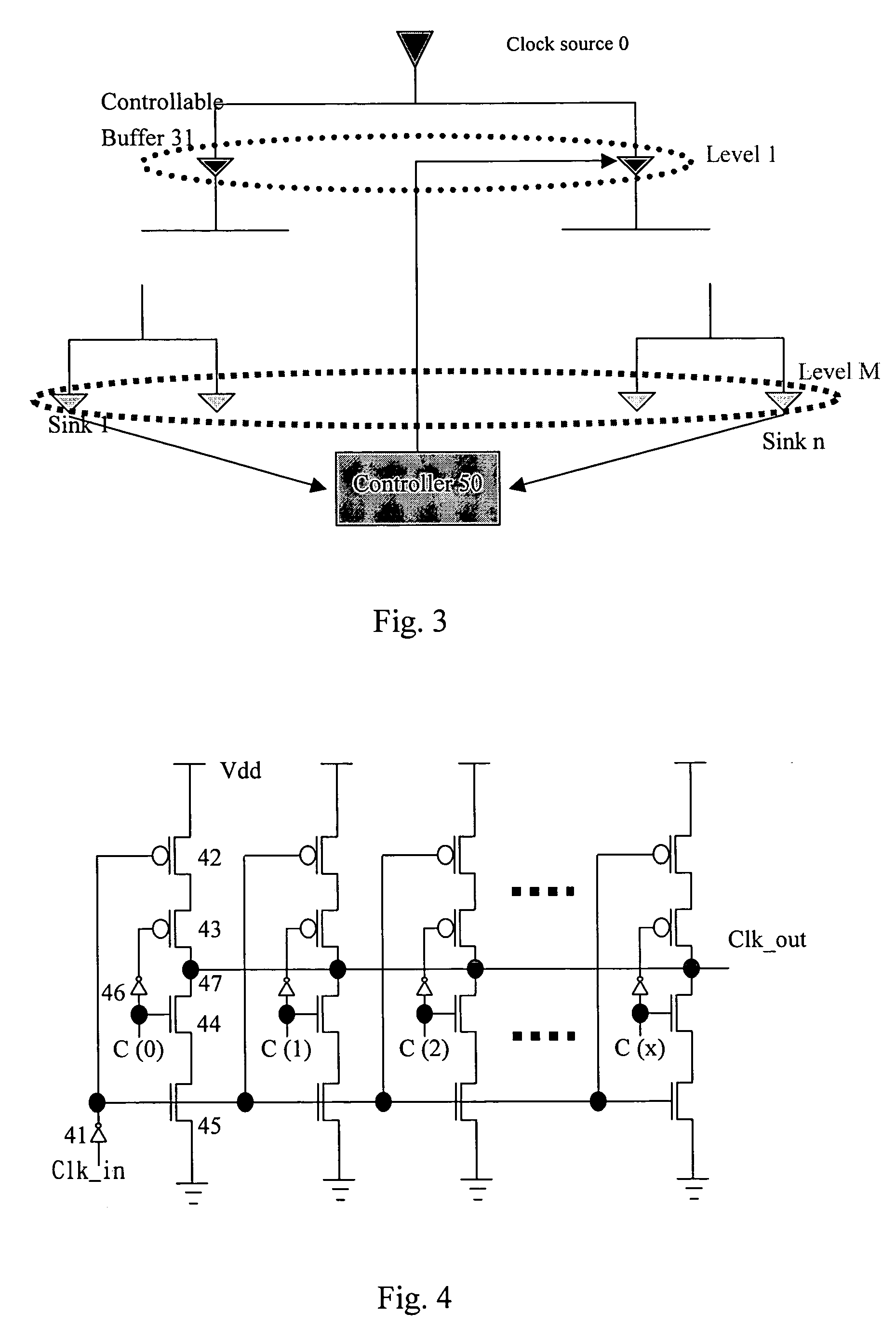Method for dynamic balancing of a clock tree
a clock tree and dynamic balancing technology, applied in the direction of generating/distributing signals, pulse techniques, instruments, etc., can solve the problems of over-estimation unrealistic, time delay of the clock, change the resistance of the metal wires, etc., and achieve the effect of generating more curren
- Summary
- Abstract
- Description
- Claims
- Application Information
AI Technical Summary
Benefits of technology
Problems solved by technology
Method used
Image
Examples
Embodiment Construction
[0016] Referring to the FIG. 3, a clock tree is shown, a controllable buffer 31 is inserted for a spcific level of the tree, and a controller 50 is provided for controlling the controllable buffer 31.
[0017] An example of the controllable buffer 31 is shown in FIG. 4, in which there are several columns of PMOSs and NMOSs combination. Each column has two PMOSs and two NMOSs connected serially as shown. The clock input signal Clk_in is inputted through an inverter 41 to the gates of the top PMOS 42 and the bottom NMOS 45 of each column. Control signals C(0), C(1), C(2), . . . C(x) are inputted to the gates of the central PMOS 43 and NMOS 44 of each colomn respectively. An inverter 46 is inserted between the gates of the central PMOS 43 and NMOS 44 of each colomn respectively.
[0018] As each of the control signals C(0), C(1), C(2), . . . C(x) is “1” (high voltage), a duplicated clock input signal Clk_in will be present as the clock output signal Clk_out at the output terminal 47 of eac...
PUM
 Login to View More
Login to View More Abstract
Description
Claims
Application Information
 Login to View More
Login to View More - R&D
- Intellectual Property
- Life Sciences
- Materials
- Tech Scout
- Unparalleled Data Quality
- Higher Quality Content
- 60% Fewer Hallucinations
Browse by: Latest US Patents, China's latest patents, Technical Efficacy Thesaurus, Application Domain, Technology Topic, Popular Technical Reports.
© 2025 PatSnap. All rights reserved.Legal|Privacy policy|Modern Slavery Act Transparency Statement|Sitemap|About US| Contact US: help@patsnap.com



